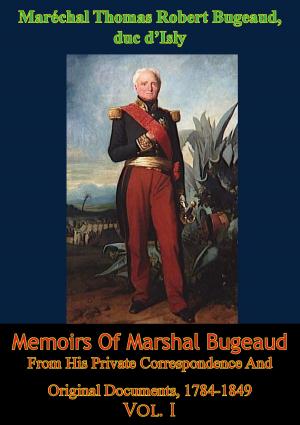Marshal Jean Lannes In The Battles Of Saalfeld, Pultusk, And Friedland, 1806 To 1807: The Application Of Combined Arms In The Opening Battle
Nonfiction, History, Spain & Portugal, France, Military| Author: | Major Robert E. Everson | ISBN: | 9781782899037 |
| Publisher: | Wagram Press | Publication: | August 15, 2014 |
| Imprint: | Wagram Press | Language: | English |
| Author: | Major Robert E. Everson |
| ISBN: | 9781782899037 |
| Publisher: | Wagram Press |
| Publication: | August 15, 2014 |
| Imprint: | Wagram Press |
| Language: | English |
The French Army corps during the Napoleonic era was a combined arms organization, designed as a self-sustaining combat unit which could operate independently from the rest of the army. One corps was designated as the advanced guard to the French army’s main body and acted as the unit which would make first contact with the enemy’s army. This corps developed the situation while other corps would attempt to maneuver to the rear of the enemy force and consequently fight a major battle under Napoleon’s control.
The advanced guard corps which made first contact, would fight an opening battle which could last many hours until reinforcements arrived. The corps under Marshal Lannes in 1806 to 1807 fought three opening battles. During each battle the corps conducted their security and reconnaissance while moving towards the enemy, seized their initial positions on the impending battlefield and fought as a combined arms organization for the duration of the opening battle.
This study shows how each of the branches; artillery, infantry, and cavalry, interacted in the opening battle. This study also reveals how Marshal Lannes established a combined arms advanced guard element within his corps each time he moved the corps as the advanced guard for the French Army. Although this advanced guard element was not a doctrinal organization for the French Army, the elements mission was strikingly similar to the larger corps acting as an advanced guard, but on a reduced scale.
The French Army corps during the Napoleonic era was a combined arms organization, designed as a self-sustaining combat unit which could operate independently from the rest of the army. One corps was designated as the advanced guard to the French army’s main body and acted as the unit which would make first contact with the enemy’s army. This corps developed the situation while other corps would attempt to maneuver to the rear of the enemy force and consequently fight a major battle under Napoleon’s control.
The advanced guard corps which made first contact, would fight an opening battle which could last many hours until reinforcements arrived. The corps under Marshal Lannes in 1806 to 1807 fought three opening battles. During each battle the corps conducted their security and reconnaissance while moving towards the enemy, seized their initial positions on the impending battlefield and fought as a combined arms organization for the duration of the opening battle.
This study shows how each of the branches; artillery, infantry, and cavalry, interacted in the opening battle. This study also reveals how Marshal Lannes established a combined arms advanced guard element within his corps each time he moved the corps as the advanced guard for the French Army. Although this advanced guard element was not a doctrinal organization for the French Army, the elements mission was strikingly similar to the larger corps acting as an advanced guard, but on a reduced scale.








![Cover of the book History Of The Consulate And The Empire Of France Under Napoleon Vol. VIII [Illustrated Edition] by Major Robert E. Everson](https://www.kuoky.com/images/2016/march/300x300/9781786259158-mnIb_300x.jpg)






